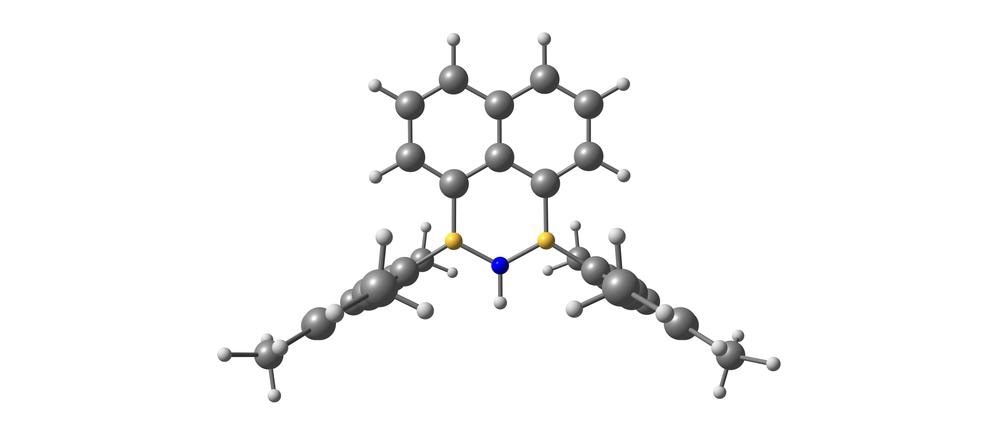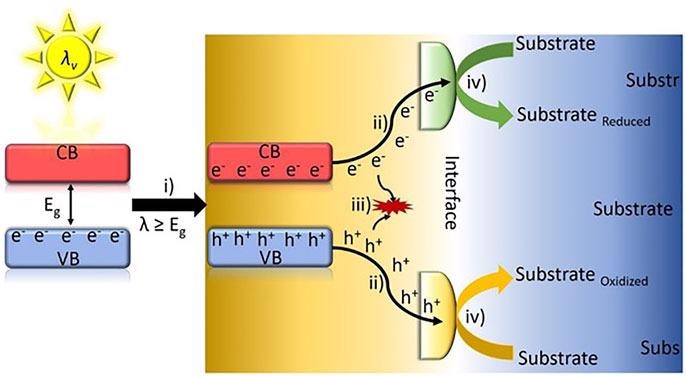To investigate the use of the wider family of carbon nitrides in novel photocatalytic applications, a study has been published in Frontiers in Materials.

Study: New Carbon Nitride Organic Photocatalysts. Image Credit: Igor Petrushenko/Shutterstock.com
One of the key research areas for photocatalytic applications is the development of novel metal-free materials that possess superior visible-light responses. One material that has emerged in recent years as an intriguing option for this purpose is graphitic carbon nitride, but it has limitations.
The Importance of Photocatalysts
The light from our sun is a clean and inexhaustible source of energy. Beyond harvesting it for power generation, the possibility of using this boundless resource for photocatalytic manufacture of fuels and chemicals is an attractive option due to a reduction in carbon emissions and environmental damage from toxic chemicals. Photocatalysts are a cleaner, cheaper alternative to traditional industrial methods that are garnering increasing research interest.
The Photocatalytic process involves four steps: light-induced electron-hole pairs, the migration of charge carriers to the surface of the semiconductor, charge recombination, and red/ox reactions. The material chosen for photocatalysis must absorb photons with an energy equal to or greater than their bandgap.
Selecting Appropriate Materials for Photocatalytic Applications
In recent years, there has been a wealth of research on materials that display advanced properties which make them appropriate choices for semiconductor photocatalytic applications. Studies have explored a wide range of materials such as ZnO, TiO3, and FE2O3 for applications such as artificial photosynthesis, nitrogen fixation, pollutant degradation, and water splitting. Amongst these, TiO3 has been the most widely studied.
TiO3 has some significant drawbacks that hinder its use in photocatalytic applications, however. It is a wide-bandgap semiconductor and can only absorb photons from the UV part of the solar spectrum and use them in photocatalytic reactions. As this is only 4% of the total spectrum, this leads to lower rates of production efficiency. Narrow-gap semiconductors such as FE2O3 display instability and can suffer from high rates of recombination, which is undesirable.

Schematic diagram of semiconductor photocatalytic reaction mechanism and the fundamental steps taking place. (i) Photo-induced electron e−/h+ pairs, (ii) charge carriers migration to the semiconductor surface, (iii) charge recombination, and (iv) red/ox reactions. Image Credit: López-Salas, N & Albero, J, Frontiers in Materials
Metal sulfides, which have been another target of research in the photocatalytic field, are known to be degraded by sunlight. Therefore, metal-free carbon-based semiconductor materials have become attractive alternatives in recent years. These materials include carbon nanotubes, doped graphene materials, and carbon nitrides. The main advantages of these metal-free semiconductor materials include their large surface area, durability, robustness, and superior optoelectronic properties.
Carbon Nitrides
The carbon nitride family of materials (which follow the formula CxNy) have emerged as forerunners for metal-free carbon-based materials which can be used for photocatalytic applications. This is reflected in the growing body of literature and studies in the field. The most widely studied carbon nitride is graphitic carbon nitride, the use of which was first reported in 2009 for photocatalysis.
Graphitic carbon nitride is prepared by the thermal condensation of nitrogen-rich precursors, and the semiconductor material is formed from stacked layers of graphitic carbon nitride. These layers are made of amino group-linked tri-s-triazine units. This material displays superior mechanical, thermal, chemical, and optoelectronic properties.
It has high chemical stability. Due to these properties, graphitic carbon nitride-based photocatalysts have been explored for applications such as water splitting, carbon dioxide reduction, and pollutant degradation.
However, the photocatalytic performance of this material is dependent upon factors such as its porosity, crystalline structure, charge transport, and limited harvesting of photos in the near-infrared and visible regions of the light spectrum. This limits its application. Due to this, carbon nitrides with different stoichiometry have been investigated for optoelectronic applications due to their promising properties.
Exploring Alternative Carbon Nitrides
Carbon nitrides with different structures have been predicted by theoretical studies since the late 80s, which have also predicted their superior optical, electronic, mechanical, and structural properties. Due to their wide range of compositional possibilities, these properties can be fine-tuned to fit their purpose. This has motivated researchers and engineers to explore their use in a wide range of applications.
However, their use is still in its infancy, facilitating the need for further, intensive research into their potential for photocatalysis and other important technologies. In the study published in Frontiers in Materials, the authors have investigated the use of these materials for photocatalysis.
The aim of the study is to provide an overview of current research, including experiments and theoretical reports on the family of carbon nitrides beyond graphitic carbon nitride, as this material has already received adequate coverage in other review studies. The review study pays special attention to the synthesis procedures and crystalline structures of these materials that make them attractive candidates for photocatalysis.
The study also looks at the current literature to find the best candidates that are currently being researched, which could facilitate the further development of next-generation carbon-based non-metallic materials for use in photocatalytic applications. The study authors have set out to provide a comprehensive knowledge base for future research based on current data and perspectives in the field.
Further Reading
López-Salas, N & Albero, J (2021) CxNy: New Carbon Nitride Organic Photocatalysts [online] Front. Mater. | frontiersin.org. Available at: https://www.frontiersin.org/articles/10.3389/fmats.2021.772200
Disclaimer: The views expressed here are those of the author expressed in their private capacity and do not necessarily represent the views of AZoM.com Limited T/A AZoNetwork the owner and operator of this website. This disclaimer forms part of the Terms and conditions of use of this website.